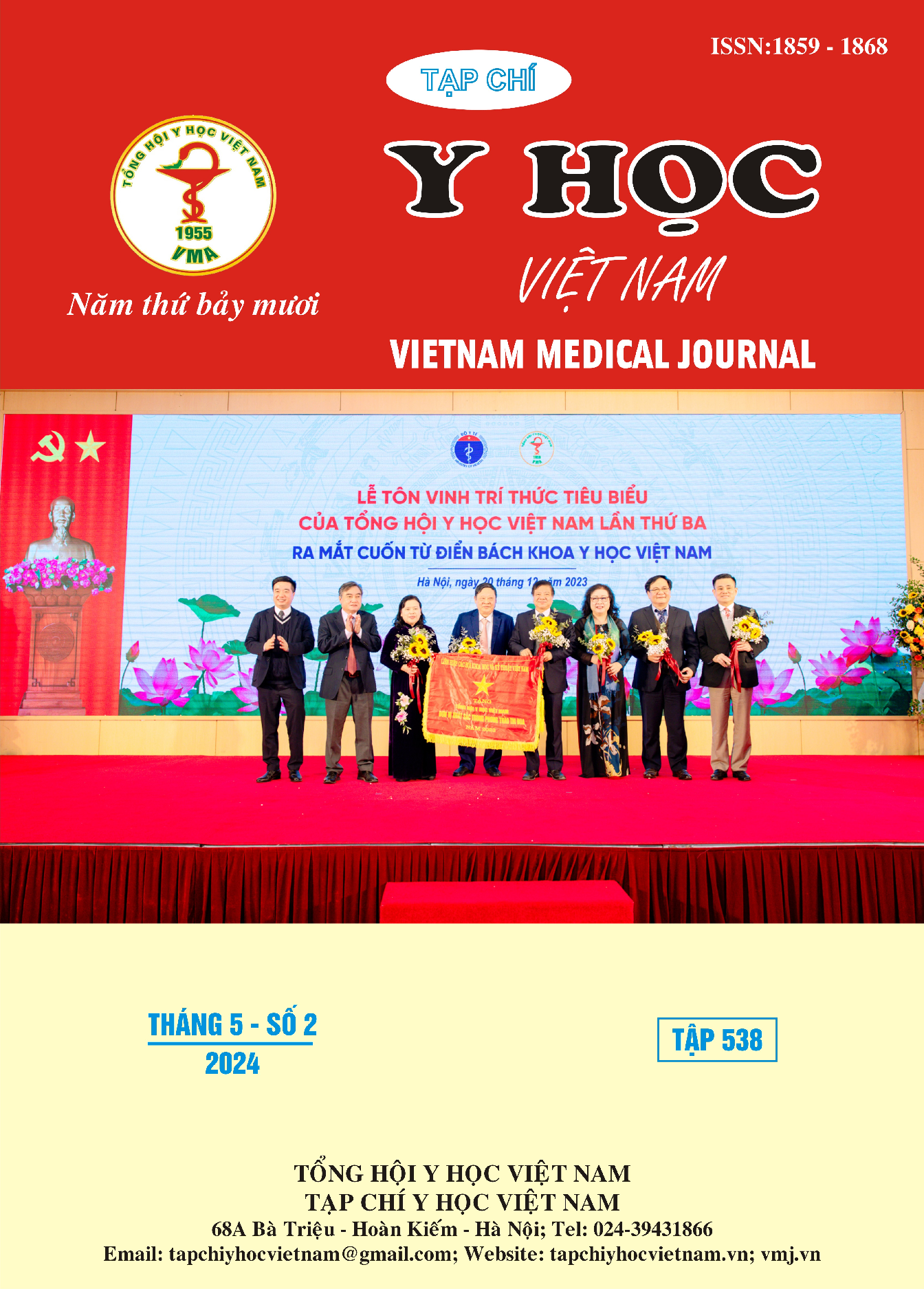EVALUATION OF THE RESULTS OF TREATMENT OF PATIENTS WITH PERIPHERAL Dizziness USING THE EPLEY TEST AT THE DEPARTMENT OF GENERAL ENDNOLOGY - HAI DUONG UNIVERSITY OF MEDICAL TECHNICAL TECHNOLOGY HOSPITAL
Main Article Content
Abstract
Objective: Evaluate the results of treating patients with peripheral vertigo using the Epley test at the Department of General Internal Medicine, Hai Duong University of Medical Technology Hospital. Research subjects and methods: cross-sectional description, convenience sampling. Results: Peripheral vertigo was found to be more common in women (80.8%) than in men (19.2%), the ratio of women: men = 4:1. In a total of 49 patients with peripheral vertigo, Benign paroxysmal syndrome, there were 42 positive cases with the Dix Hallpike test, 31 patients of which agreed to be treated with the Epley test, accounting for 59.6%. The success rate is 100%, including 3 cases of increased nausea after the test, 1 case of vomiting and 1 case of increased dizziness. Conclusion: Treatment of peripheral vertigo using medication combined with the Epley maneuver is highly effective, but it is still necessary to prevent complications from occurring (nausea, vomiting, increased dizziness).
Article Details
Keywords
peripheral vertigo, Epley test.
References
2. Bronstein A.M, Golding J.F, Gresty M.A, et al (2010). “The social impact of dizziness in London and Siena”. J Neurol, 257(2),183–190
3. Agrawal Y., Pineault K.G, Semenov Y.R, (2018). “Health-related quality of life and economic burden of vestibular loss in older adults”. Laryngoscope Investig Otolaryngol, 3(1), 8–15
4. Ogita H., Taura A., Funabiki K. et al (2010). “Clinical and epidemiological study on inpatients with vertigo at the ENT Department of Kyoto university Hospital”. Acta Otolaryngol Suppl, (563),34-38
5. Lai Y.T, Wang T.C, Chuang L.J et al (2011). “Epidemiology of vertigo: a National Survey”. Otolaryngol Head Neck Surg, (145), pp. 110-116
6. Bunasuwan P., Bunbanjerdsuk S., Nilsuwan A., (2011). “Etiology of vertigo in Thai patient at Thammasat Hosspital”. J.Med Assoc Thai, Vol 94 (7), 102-108.
7. Phan Kim Ngân (2015). Đánh giá tình trạng chóng mặt ngoại biên hiện nay tại khoa nội thần kinh tổng quát Bệnh viện Nhân Dân 115, Luận án chuyên khoa cấp II, Trường Đại học Y Dược Thành Phố Hồ Chí Minh
8. McClure J.A, Willett J.M, (1980).”Lorazepam and diazepam in the treatment of Benign paroxysmal positional vertigo”. J Otolaryngol, Vol 9(6), 472-477
9. Epley J (1992). “The canalith repositioning procedure: for treatment of benign paroxysmal positional vertigo”. Otolaryngol Head Neck Surg, Vol 107 (3), 339-404
10. Fung K., Hall S.F, (1996). “Particle repositioning maneuver: effective treatment for benign paroxysmal positional vertigo”. J Otolaryngol, Vol 25 (4), 243-248.


